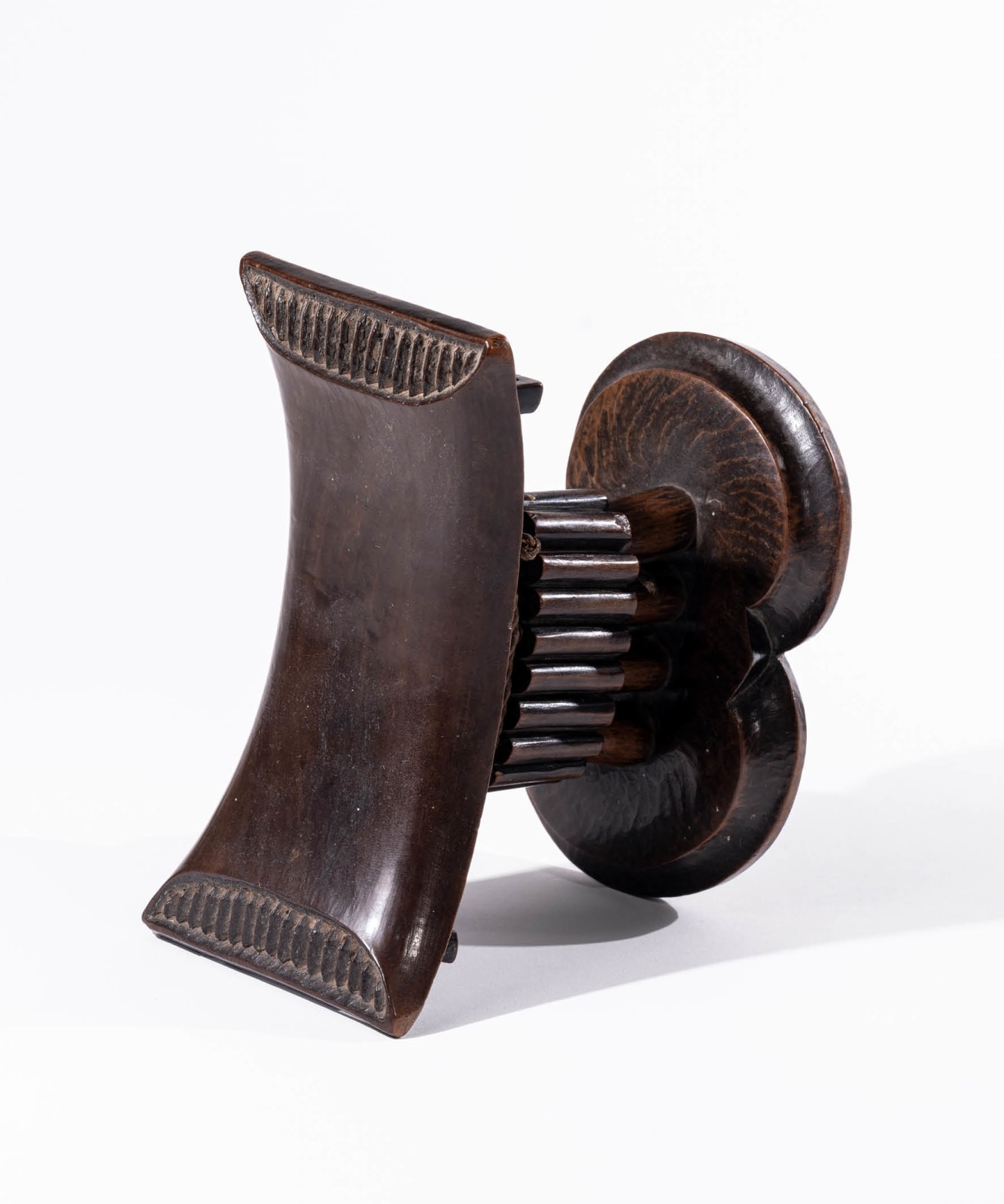Anonymous Tsonga artist
5 1/2 x 6 3/4 x 3 1/2 in
Further images
This fine headrest is an example of a type of which there are a number of documented and well provenance examples in European and southern African museum collections: one was collected by Theodore Bent among the Shona in Zimbabwe, and another by William Distant among the Gwamba Tsonga in the Transvaal, both prior to 1892. All of these rest on a stylistic cusp, where the base and aspects of the design of the support relate to examples originating in Shona territory, while the arrangement of the platform and the pendants relate to pieces collected in Tsonga areas, or areas into which they had migrated during the nineteenth century. The use of a number of columns to support the platform is common in the headrests of both groups, as is the introduction of a central tying element. In this case the central element has a cog-like appearance, tying the columns together visually. The artist has made the outer columns curve inwards slightly towards the centre, as though they are responding to the tension created by the central cog. Such finesse in carving small details is common in most of the best examples of Tsonga headrests, and we can assume that these were carved by specialists. Still attached to this example is the rope which its owner would have used to take the object on his journeys with him.
Text from: Klopper (Sandra), Nettleton (Anitra) & Pethica (Terence J.), "The Art of Southern Africa. The Terence Pethica Collection", Milan: 5 Continents, 2007, p. 117, #47
Provenance
Kevin Conru, Brussels, Belgium, 2003
Terence J. Pethica Collection, Coleshill, Buckinghamshire, UK
Douglas Barrett, London, UK, 2022
Duende Art Projects, Antwerp, Belgium, 2022
Publications
"BRUNEAF, Brussels Non European Art Fair XIII", Brussels, 2003, p. 32
Klopper (Sandra), Nettleton (Anitra) & Pethica (Terence J.), "The Art of Southern Africa. The Terence Pethica Collection", Milan: 5 Continents, 2007, p. 117, #47
let's keep in touch
Join our community & never miss out on a DUENDE moment from now on
* denotes required fields
We will process the personal data you have supplied to communicate with you in accordance with our Privacy Policy. You can unsubscribe or change your preferences at any time by clicking the link in our emails.













